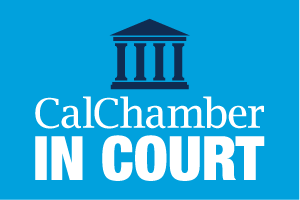In this episode of The Workplace podcast, CalChamber Executive Vice President and General Counsel Erika Frank and employment law expert Jennifer Shaw discuss key details of California’s COVID-19 Supplemental Paid Sick Leave, including gig workers, eligibility requirements, verbal requests, avoiding a “gotcha moment,” and employer recommendations.
Standout Details
California’s COVID-19 Supplemental Paid Sick Leave announced in Executive Order N-51-20 by Governor Newsom on April 16, 2020 applies to large employers with more than 500 employees in food sector industries.
One of the interesting aspects of this supplemental paid sick leave is that gig economy workers are also covered by the order, Shaw tells Frank. It’s clear in the order that the people a company is paying the benefit to don’t need to be that company’s employee, though “it’s not really clear in practical terms how this is going to work,” she says.
The order provides 80 hours of paid leave for a full-time employee. For part-time employees, the leave is prorated based on the number of hours worked over the previous six months, Shaw explains. Moreover, the order allows the leave to be requested verbally, meaning employers will not be able to ask the employee for written documentation.
Additionally, employers cannot require employees to use their existing sick leave before using this supplemental paid sick leave, Shaw says.
“[Employees] get to save their Healthy Families Healthy Workplace, which is the existing mandatory [law, and] they get to decide to use the supplemental …” Frank adds.
Eligibility
Employees working for employers defined under the executive order must meet specified eligibility requirements in order to take the leave.
Shaw explains that employees who qualify for this sick leave have their own quarantine orders and are not under a general shelter-in-place order. For example:
• An employee who recently came back from Italy (or abroad) is put under quarantine by the county health department.
• The employee’s health care provider puts them into quarantine due to their current medical conditions or they’re living with someone who is more susceptible to COVID-19.
• Also: a catch-all category for employees who need time off because of COVID-19.
The Division of Labor Standards Enforcement (DLSE) will issue a poster on this order on Thursday, April 23 that will give more guidance, Shaw says. An FAQ page is available.
Avoiding a ‘Gotcha Moment’
On Thursday, April 23 the Labor Commissioner is going to issue a poster for the COVID-19 Supplemental Paid Sick Leave and there will be a new notice requirement as well, Frank says.
We don’t want this to be a “gotcha” nine months from now, where plaintiff lawyers are calling out employers for not doing X or Y, Shaw says.
Some of the requirements, such as the notice, piggybacks on the existing notice under California’s Healthy Families Healthy Workplace Act, so it will be helpful to know if everything applies or if there are exceptions, Frank adds.
Employer Recommendations
Shaw recommends that employers provide the supplemental paid sick leave information on their pay stubs. As you would show vacation or sick leave usage, it is the best practice to include the supplemental paid sick leave on the pay stub as well.
It’s tough for employers to take a step back from what’s going on and really think about how they are going to implement a number of things. Shaw recommends that listeners keep it simple, exercise good faith, be transparent and if you don’t know the answer, tell your employees that while you don’t have a current answer, you are working on it.

